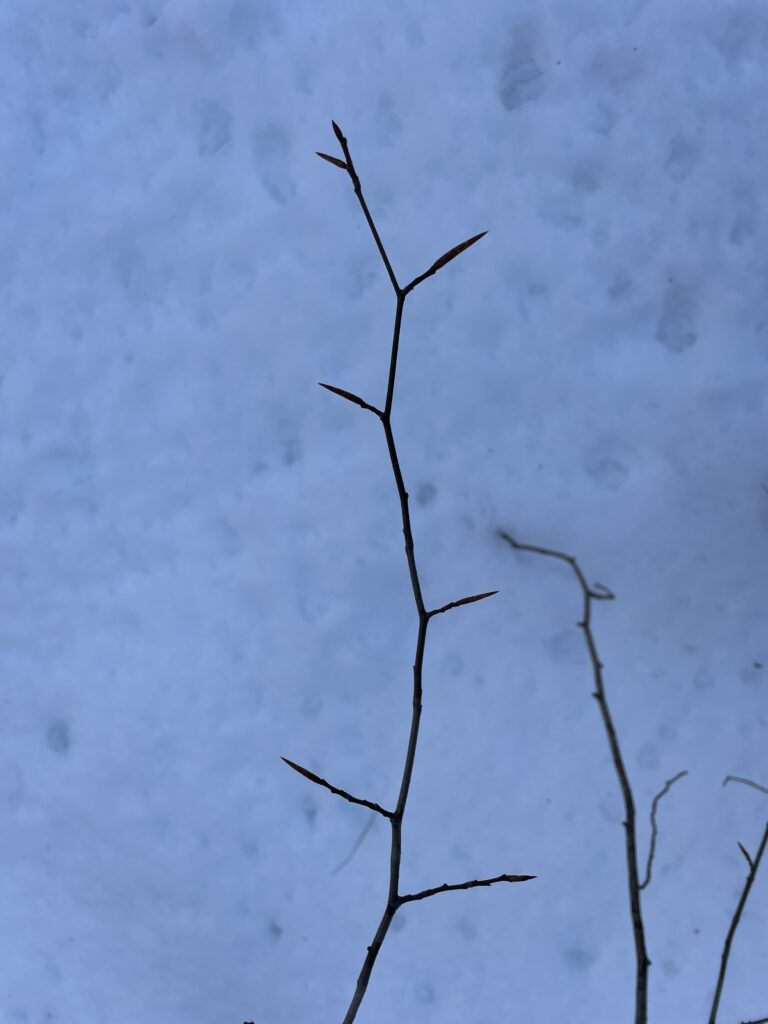Hellloooo blog!! We are in the thick of the winter season. Snow storms through the night left a new coating on white on the forest floor. As I walked into Centennial I immediately noticed how bare the trees were. It was so open that I could, for the first time, see the hill that lies in the center of the woods. Today was a sunny Sunday afternoon, a rare beauty. I didn’t have plans to go out into the woods today but I could not pass up the 40 degree weather. As it was the perfect opportunity for a study break from my chemistry filled week.




For this week’s blog I was in charge of identifying a deciduous species in my spot that I am going to track as we move into spring. On the edge of my spot I found a beautiful American Beech tree that I decided was going to be the tree that I am going to observe. The DBH (diameter breast height) of this tree was fairly small and I am estimating it to be around 5 inches. I’ll get back to this blog post on the exact DBH. Anyways, the distinguishing features that lead me to identify this as a an American Beech, fagus grandifolia, was the bark and the buds. This tree is fairly young. The bark is gray and smooth with what looks like lichen on the bark. The branching is alternate on the branches and twigs. The buds were very long and thin with a zig-zag pattern. These buds with their overlapping scales, are similar to the shape of cigars.




Over the next few months I will be revisiting this tree and observing the budding patterns and growth into the spring 🙂
